News
PALMA SOLUTIONS JSC
Can rooftop solar power systems meet the continuous operation demands of modern manufacturing facilities?
In the context of rising electricity costs and growing pressure for sustainable development, many businesses are turning to renewable energy solutions—particularly rooftop solar power systems. However, one common question arises: Can rooftop solar power systems meet the continuous operation demands of modern manufacturing facilities?
By principle, a solar power system only generates electricity during daylight hours, when sunlight is available. Meanwhile, most manufacturing facilities operate around the clock—especially industries like food processing, textiles, electronics, or chemicals. For instance, a textile factory with an average daily electricity consumption of 1,000 kWh needs a continuous power supply to operate machinery such as weaving and dyeing equipment, 24/7. Therefore, to ensure a stable and uninterrupted power source, supplementary solutions are necessary alongside solar energy.
One highly effective solution is to combine solar power with a Battery Energy Storage System (BESS). In this setup, solar energy is prioritized for direct use by the factory. Any excess electricity generated during the day is stored in batteries. For example, a 500 kWp rooftop solar system might generate around 2,000 kWh of electricity during the day. If the factory uses only 1,000 kWh during that time, the remaining 1,000 kWh can be stored in a battery system with, say, a 1,500 kWh capacity. After sunset or during overcast weather, the system automatically discharges the stored electricity to maintain factory operations without interruption.
Depending on the scale and capacity of the battery system, this configuration can either power operations independently for several hours or act as a backup during grid outages. For example, with a 1,500 kWh battery, a factory consuming 100 kWh/hour can maintain operations for approximately 15 hours without drawing from the national grid. In practice, several factories in Vietnam and abroad have already implemented this model. One notable example is a management office in an industrial park in Binh Duong, certified by EDGE, which installed a 60 kWp solar system coupled with 40 kWh of battery storage—enabling them to reduce grid power usage by 70% and maintain operations even during sudden blackouts.
Another common solution is to integrate rooftop solar with the national power grid. In this model, solar and grid electricity operate in parallel. During the day, solar power is used first to supply loads; any shortfall is covered by the grid. For example, if the factory consumes 100 kWh per hour but solar only produces 70 kWh, the remaining 30 kWh is drawn from the grid. At night, the factory is fully powered by the grid. This model involves a lower upfront investment compared to systems with battery storage, making it ideal for factories with flexible production schedules or those looking to optimize energy costs without fully relying on self-generated power. A tire factory in Binh Duong adopted this model with a 1.5 MWp rooftop solar system and managed to reduce electricity bills by approximately 30%, without having to invest heavily in batteries.
However, to ensure stable and efficient operation, companies must invest in high-quality equipment—such as high-efficiency solar panels (over 23%) and inverters from reputable manufacturers—along with proper engineering design. Additionally, implementing a smart Energy Management System (EMS) is crucial. EMS solutions can automatically manage power flow among sources (solar, battery, grid), prioritize solar usage, charge batteries with excess energy, or draw from the grid when necessary—maximizing both operational efficiency and economic returns.
In conclusion, rooftop solar power can meet uninterrupted power supply needs when appropriately combined with battery storage or the national grid. Investing in such a hybrid energy system not only helps businesses ensure power reliability and reduce losses from potential outages (which can cost hundreds of millions of VND), but also supports sustainability goals (ESG) and long-term carbon emission reduction—cutting hundreds or even thousands of tons of CO₂ annually for large-scale operations.
29/08/2025 14:47:11
News other
Battery Energy Storage Systems (BESS) help Vietnam optimize renewable energy, stabilize the power grid, and accelerate the clean energy transition.
Explore the components, operating principles, battery technologies, and sustainable lifecycle of Battery Energy Storage Systems (BESS) – a key solution toward Net Zero.
 PALMA SOLUTIONS JSC
PALMA SOLUTIONS JSC


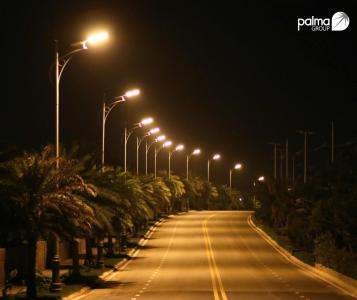
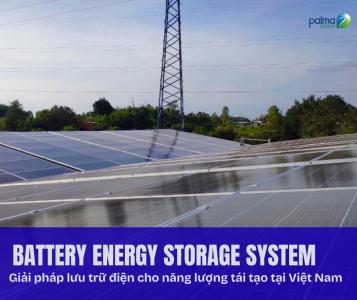
![[PALMA x NOVALAND] WORKSHOP ON MAINTENANCE AND SERVICING OF SOLAR LANDSCAPE LIGHT PLL-30 AT NOVA HILLS – MUI NE [PALMA x NOVALAND] WORKSHOP ON MAINTENANCE AND SERVICING OF SOLAR LANDSCAPE LIGHT PLL-30 AT NOVA HILLS – MUI NE](https://palma.com.vn/upload/z3634653067260_15cb1f4d62b14f3a684fdf4ee9de4870_-11-08-2022-13-55-36.jpg)
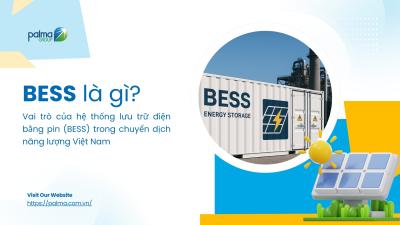
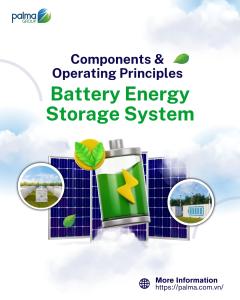
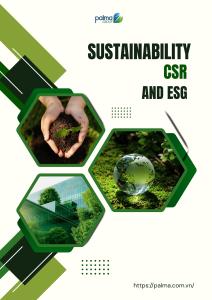
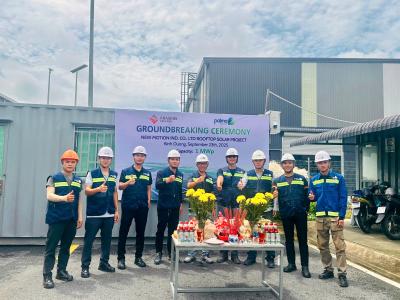

_-24-10-2021-21-55-01.png)
_-21-04-2022-13-38-01.png)
